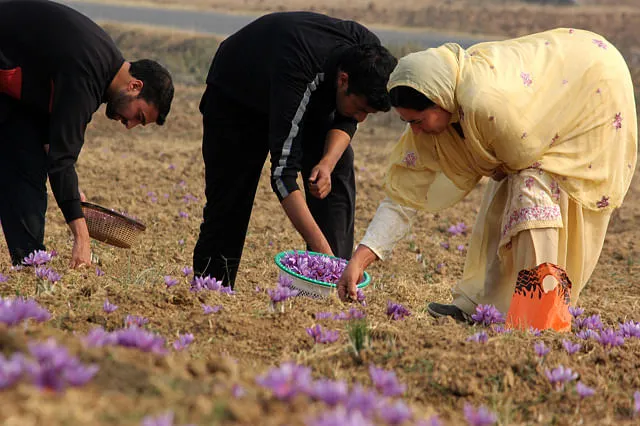Family farming is a worldwide phenomenon and key agriculture model. It is highly prevalent in the saffron economy with different farm size and level of development offering explicit comparative advantages. It reduces disguised unemployment (unemployment unaffecting aggregate economic output). The use of family labour upto a certain level is gainful but beyond that returns to investment decreases. Therefore, we need to employ optimal levels of family labour in saffron cultivation. The farm resources and farm setting will be handled by the farmer efficiently and in this way we can manage farms properly. It has a dual effect: On one hand, it will increase farm productivity and on the other hand, it will make their work cheaper in terms of monetary costs. In a nutshell, it will make investment cost effective.
The family labour has a positive impact on saffron investment. In view of that, it will be very important that farmers will be provided greater incentives to invest given the higher susceptibility and correspondingly greater exposure to risk that arise due to their low economic status and the very likelihood that the moment their role in farming activities becomes commercially cost-effective it will be taken or unnoticed by commercial agriculture. Schemes should be launched to boost family farming and encourage investments in saffron. It has been seen that policies that aim at boosting income and productivity levels of farms have the tendency to bring convergence of strong anti-poverty forces in agricultural low income economies (Ashby et al., 2009). Such policies should be promoted at both national and international level.
To improve returns on investment in saffron farming in the first place and feed the saffron families in the second place alongside doing saffron farming sustainably, a vital and radical transformation in our ecosystem is necessary. To be operational, radical activities must address an intricate series of interrelated goals covering social, economic, and environmental aspects. Environmental Impact Assessment (EIA) is a widely used tool for estimating the potential impact of any given activity on the environment. Agriculture and horticulture projects are the most valid project types talking about constituents of sustainability and biological diversity of great significance to agriculture in broad-spectrum and horticulture in precise form. Under horticulture, saffron is an important cash crop having high economic value, efficiency, and wide market. It is a great source of basic health needs, food and income for not only the majority of saffron families who directly or indirectly are dependent upon saffron but also for people who demand it. Therefore, the conservation and sustainable use of saffron are very important. When allowing for the potential impact of the saffron industry on the environment, biodiversity agricultural concerns are very important as they provide both indispensable ecosystem services and biodiversity that offer food security. Hence, environmental requirements are an essential part of every saffron business.
Family farmers in saffron business hold distinctive potential to become main agents of development plans of saffron. Therefore, their involvement at every stage of the farming is very important. They need to be given a good chance to show their talent and potential at both national and international arena. In both developed and developing economies of the world, family farming is the chief form of food and agricultural production which produces over 80 percent of the food of the world in value terms. On similar grounds, in both developed and developing saffron villages, family farming is the principal form of saffron production affecting the investment decisions in saffron and returns thereof. Given the multidimensional nature of family farming, the saffron farm, saffron families, saffron production, traditional saffron knowledge and advanced saffron farming solutions, the future prospects of saffron are all profoundly entangled or interrelated. All these factory have great bearing upon the environment factor. Hence, conservation of the environment is very essential.
The concerned authorities must channel strong political commitment at all levels (national, regional and international levels and support the creation of a facilitating environment for all saffron family farmers in general and saffron family farmers of Pampore (saffron town) in particular to be empowered and supported. Placing eco-friendly family farming production models at the focus of involvement for saffron farms will go a long way and contribute to a saffron land free of any hitches and glitches. Under such a model, saffron will be managed sustainably and no farmers will be left behind since they hold distinctive potential to become key drivers of inter and intra-development strategies of saffron farming. In both industrialized and unindustrialized or emerging economies of the world, we see family farming creating wonders for agriculture and its allied areas. In addition, it acts as the food security producing majority of the world’s food. Keeping in view the diversified nature of family farming on one hand and saffron farming on the other hand, not only households and farms but standard of living and quality of life of both industrialized and unindustrialized countries alongside their agricultural economics of knowledge are all profoundly entangled.
Dr. Binish Qadri Assistant Professor, Department of Economics, University of Kashmir
Disclaimer: The views and opinions expressed in this article are the personal opinions of the author.
The facts, analysis, assumptions and perspective appearing in the article do not reflect the views of GK.






